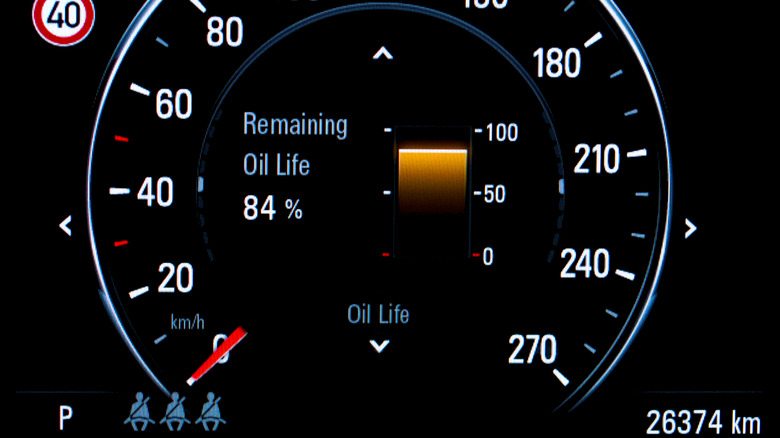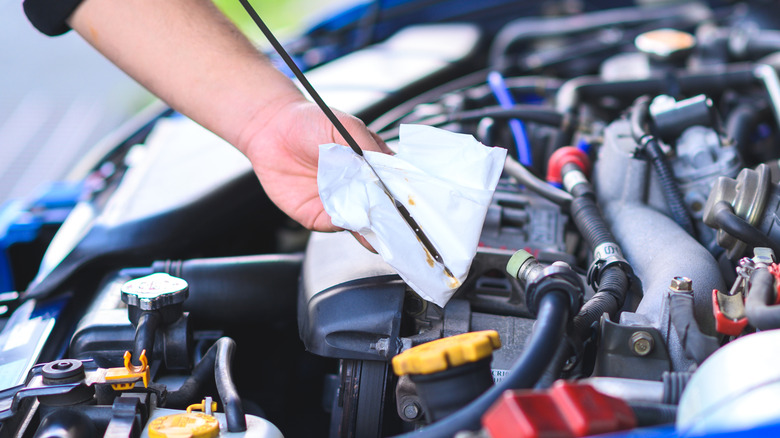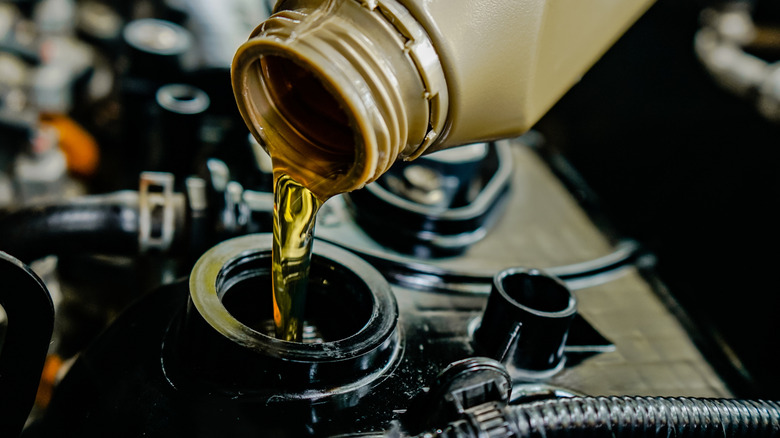How Accurate Are The Oil Life Monitors In Modern Cars?
The auto industry has seen its share of tech advancements, often to do with improving convenience or safety. Some work, some don't. So, it is fair to question whether new technology in cars, such as oil life monitors (OLMs), can work. This is especially true now that certain modern cars are boasting oil life monitors in place of physical dipsticks. Are OLMs accurate enough to trust them?
Well, there is no straightforward answer to whether oil life monitors are accurate, as they have long proven to have limitations — like pretty much any other fluid measurement system in vehicles. Even so, today's oil life monitors are way more advanced than previous generations, which were straightforward, mileage-based devices that didn't really monitor operating conditions (among other factors) when prescribing oil-change intervals. Modern OLMs are more algorithm-based, accounting for drive frequency, time since last oil change, heat cycles, and even temperature.
In an experiment, oil analyst and YouTuber Lake Speed Jr. of Motor Oil Geek took a sample of spent oil from a Cadillac to see how honest the car's OLM was. Turns out, it was playing it safe. There was more life remaining in the oil than the system showed — more like how a gas light showing doesn't necessarily mean you're out of gas. "I think this is conclusive proof that you can trust the oil life indicator to tell you when it is time to change your oil," Lake concluded.
Where oil life monitors' algorithms fall short
Oil life monitor's algorithms rely on broad hypotheses and typical vehicle usage, and therefore, may not precisely match the unique circumstances faced by every driver. For instance, you could be using your vehicle in harsh environments or have bad habits that affect your car engine oil's lifespan, among other things that the algorithm doesn't properly account for. In other words, there are things your OLM — no matter how advanced you think it is — might not track.
First, your OLM can't tell you if your engine oil levels are running low. Hopefully, though, the oil pressure indicator will show before you run out entirely and potentially damage the engine. To avoid such situations, you might want to inspect your oil at least once a month. Second, don't expect your OLM to assess oil quality. Hell, OLMs can barely tell the difference between olive oil (don't try this at home) and synthetic motor oils.
Because of this, your oil life monitor can show an alert even if your engine's oil still has thousands of miles left on it before it needs changing. In the event such happens, you're better off sticking to the full drain interval advised on the packaging. Third, OLMs also can't show the oil condition: It won't tell you that your oil has 700 ppm of wear metal. The only way to get such information is through oil analysis.
Why the engine oil you use still matters
As a car owner or enthusiast, it's important that you understand the relationship between engine oil type and oil life monitors. Despite not being able to differentiate between different oils, OLMs offer helpful guidance on when to have your engine oil replaced, as we've seen. However, using high-quality engine oils can significantly enhance how these systems function. In fact, stats from AAA show that synthetic oils generally hold up better than conventional oils, often lasting between 7,500 and 10,000 miles before requiring a change.
On that note, it's safe to say that OLMs are not an alternative to routine inspections and maintenance, despite offering a more economical and eco-friendly approach to car maintenance. Instead, car owners should use them more as a guide and not as a strict law. Using high-quality synthetic motor oils and physically inspecting oil quality and levels regularly are still vital, especially if you care about your engine's longevity.
Perhaps with time, these systems will get better and achieve higher oil change timing accuracy as more tech upgrades continue to innovate. Meanwhile, you might want to maintain a balanced approach to technology and traditional maintenance to see the best results.


